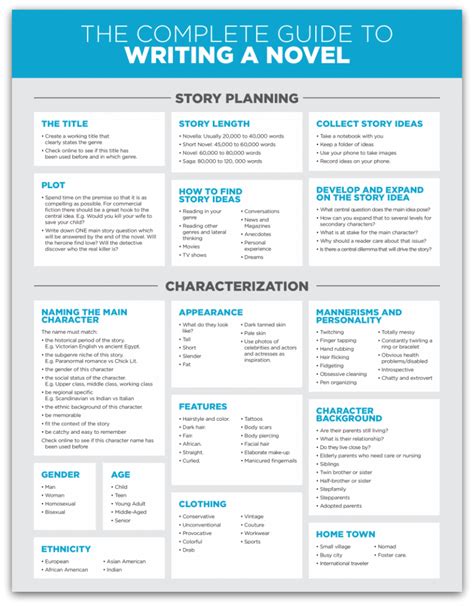How To Write A Novel For Beginners Pdf
Ronan Farrow
Apr 03, 2025 · 4 min read

Table of Contents
How to Write a Novel for Beginners: A Comprehensive Guide
This guide provides a beginner-friendly approach to novel writing, covering everything from initial brainstorming to final polishing. We'll focus on practical steps and actionable advice to help you craft your story. Downloading this as a PDF isn't necessary; the information is readily available here!
I. Laying the Foundation: Idea Generation and Planning
Before diving into writing, a solid foundation is crucial. This includes:
A. Brainstorming Your Novel Idea:
- Finding Inspiration: Where do your story ideas come from? Explore different avenues: personal experiences, news stories, historical events, dreams, and even other books (but remember to make it your own!). Consider using freewriting or mind-mapping techniques to generate ideas.
- Developing Your Core Concept: Once you have an idea, flesh it out. Who are your main characters? What is the central conflict? What is the overall theme or message you want to convey?
- Creating a "What If" Scenario: This is a powerful technique to develop a compelling plot. Start with a basic premise and then ask yourself, "What if...?" This will help you explore different possibilities and build suspense.
B. Character Development:
- Creating Believable Characters: Give your characters depth. Develop their backgrounds, motivations, strengths, weaknesses, and relationships with other characters. Consider their physical appearance, mannerisms, and dialogue.
- Character Arcs: Think about how your characters will change and grow throughout the story. What challenges will they face? How will they overcome them? A well-defined character arc makes your story more engaging.
C. Plot Outline and Structure:
- The Three-Act Structure: This classic structure divides your novel into three parts: setup, confrontation, and resolution. While not mandatory, it provides a helpful framework.
- Creating a Plot Outline: A detailed outline helps ensure your story flows logically. You don't need to rigidly adhere to it, but it serves as a roadmap to guide your writing process. Consider using a timeline or character chart to keep track of events and relationships.
- Pacing Your Story: Vary the pace to maintain reader interest. Use shorter sentences and paragraphs for action scenes and longer ones for descriptive passages.
II. Writing Your First Draft: Getting the Words Down
The key to writing your first draft is to simply start writing! Don't worry about perfection; just get your ideas down on paper (or screen).
A. Setting a Realistic Writing Schedule:
- Consistency is Key: Set aside dedicated writing time each day, even if it's just for 30 minutes. Regular writing builds momentum and helps you maintain focus.
- Finding Your Writing Rhythm: Experiment with different times of day to determine when you're most productive.
B. Overcoming Writer's Block:
- Freewriting: Write continuously for a set period without stopping to edit or censor yourself. This helps unlock your creativity and overcome mental blocks.
- Changing Your Environment: If you're struggling in your usual writing space, try a new location – a coffee shop, library, or park.
III. Revising and Editing Your Novel: Polishing Your Work
Once you've completed your first draft, it's time for revision and editing. This is where you refine your story and make it the best it can be.
A. Self-Editing:
- Multiple Reads: Read through your manuscript multiple times, focusing on different aspects each time (plot, character development, dialogue, pacing, etc.).
- Seeking Feedback: Share your manuscript with trusted beta readers for constructive criticism.
B. Professional Editing (Optional):
- Developmental Editing: This focuses on the big picture—plot, structure, and character development.
- Copy Editing: This addresses grammar, punctuation, and style.
- Proofreading: This is the final check for any remaining errors.
IV. Final Steps: Publication and Beyond
After you've revised and edited your novel, consider your options for publication:
A. Traditional Publishing:
- Finding a Literary Agent: An agent will represent you to publishers.
- Submitting Your Manuscript: Publishers receive many submissions, so patience is essential.
B. Self-Publishing:
- Choosing a Platform: There are several platforms available for self-publishing your novel, such as Amazon Kindle Direct Publishing.
- Marketing Your Book: Self-publishing requires you to handle marketing and promotion.
This guide offers a starting point. Remember, the journey of writing a novel is a marathon, not a sprint. Be patient with yourself, celebrate your progress, and most importantly, enjoy the process!
Featured Posts
Also read the following articles
| Article Title | Date |
|---|---|
| How Big Is A 20 L Bag | Apr 03, 2025 |
| Howa Super Lite Review | Apr 03, 2025 |
| Texters How Disappointing Crossword Clue | Apr 03, 2025 |
| Invisalign How Many Refinements | Apr 03, 2025 |
| Mary Oliver How I Go To The Woods | Apr 03, 2025 |
Latest Posts
-
How Did This Get Made Jingle All The Way
Apr 04, 2025
-
How Did This Get Made Holiday In Handcuffs
Apr 04, 2025
-
How Did They Cut Diamonds Before Lasers
Apr 04, 2025
-
How Did The Florida Keys Get Its Name
Apr 04, 2025
-
How Did The Ballad Of Never After End
Apr 04, 2025
Thank you for visiting our website which covers about How To Write A Novel For Beginners Pdf . We hope the information provided has been useful to you. Feel free to contact us if you have any questions or need further assistance. See you next time and don't miss to bookmark.
